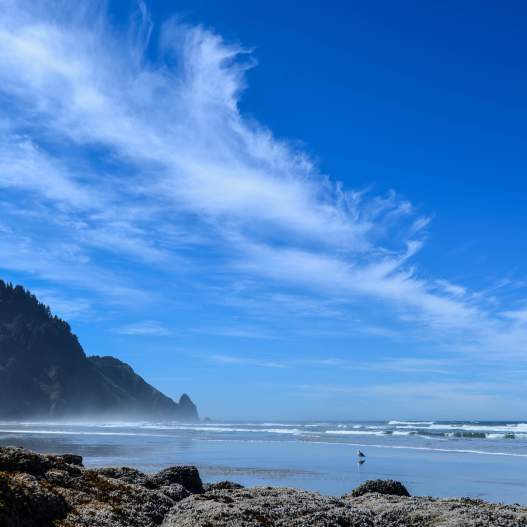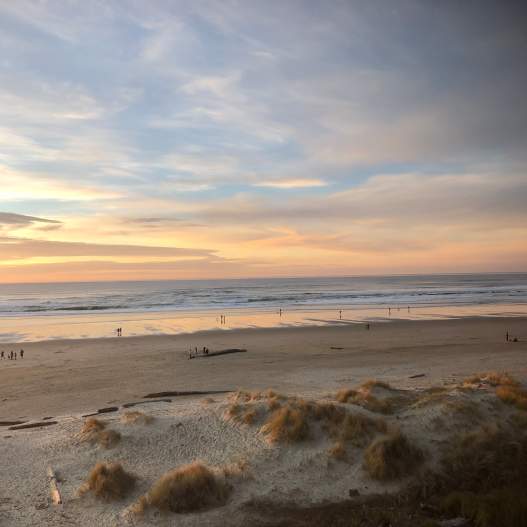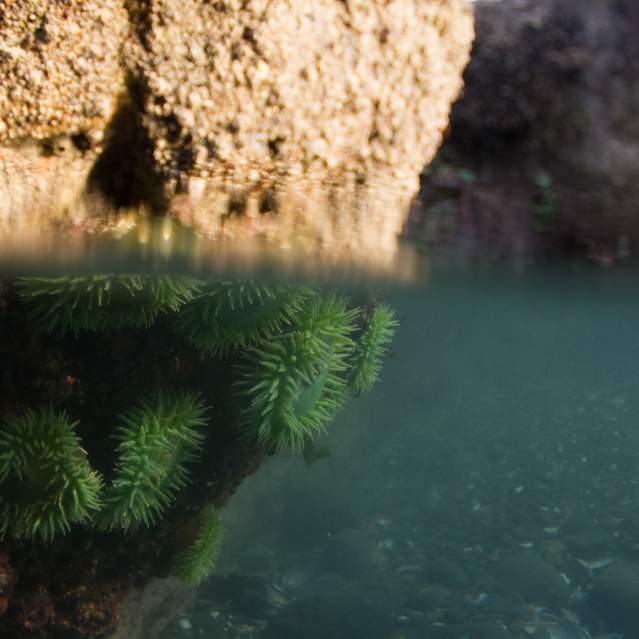Oregon's beaches are especially perfect for long sandy strolls because there are miles of pristine beaches with relatively few people. In 1967 Oregon's Beach Bill secured the public's recreational access to all beaches up to the vegetation line.
The scenic beauty includes dramatic cliffs, evergreen trees, rolling dunes, tidepools and wonderful wildlife. Birds swoop above or hop along the beach, seals or sea lions may be spotted lolling on rocks and during migration, whales spout or breach offshore.
Please do not disturb, feed or interfere with wildlife. During the nesting season of the endangered Western Snowy Plover, March to September, portions of the Siltcoos Estuary are under recreational restrictions.

The best time to hunt for treasure on the beach is two hours after high tide when the ocean has rolled away leaving new offerings scattered across the shoreline. Consult a tide table to plan an optimal experience. After a storm churns up the sea, items from deeper down or farther out may also be washed up.
What natural treasurers might you find? Driftwood, seaweed, smooth stones, bits of shell, the skeleton of a crab, sea glass, a bird feather or washed-up jellyfish. If you are fortunate you might pick up an agate, fossil or piece of petrified wood. Rare glass floats are always an exciting find!
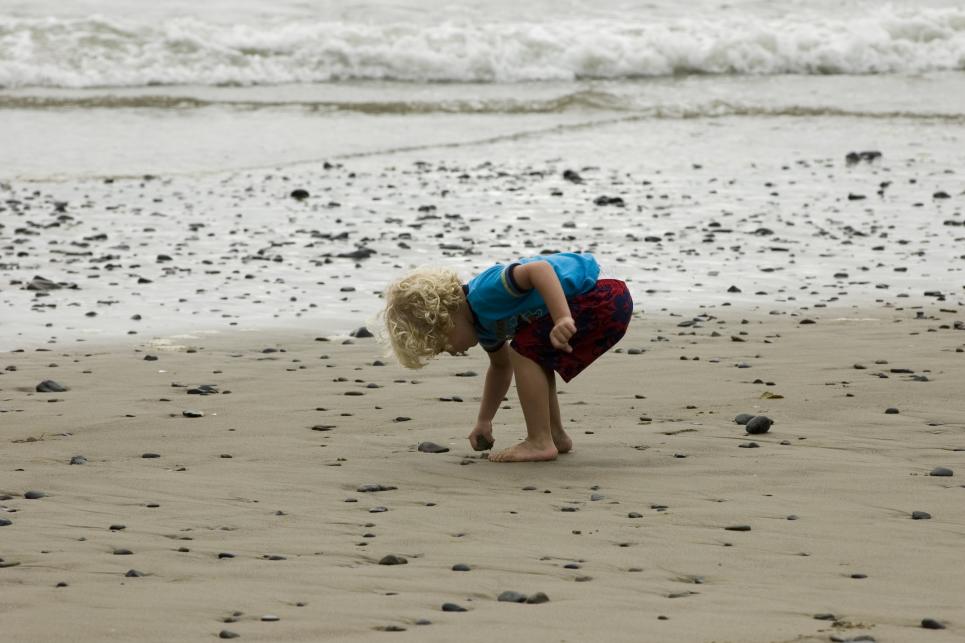
Rockhounds should know there is a limit of one gallon per day for collecting along the Oregon Coast (and only three gallons total within a year). Permits are needed for collecting vertebrate fossils.
Leave living creatures where they are - including seastars and sand dollars. Do not climb or sit on logs along the shoreline as they could roll unexpectedly. And always keep an eye on the ocean watching for sneaker waves.
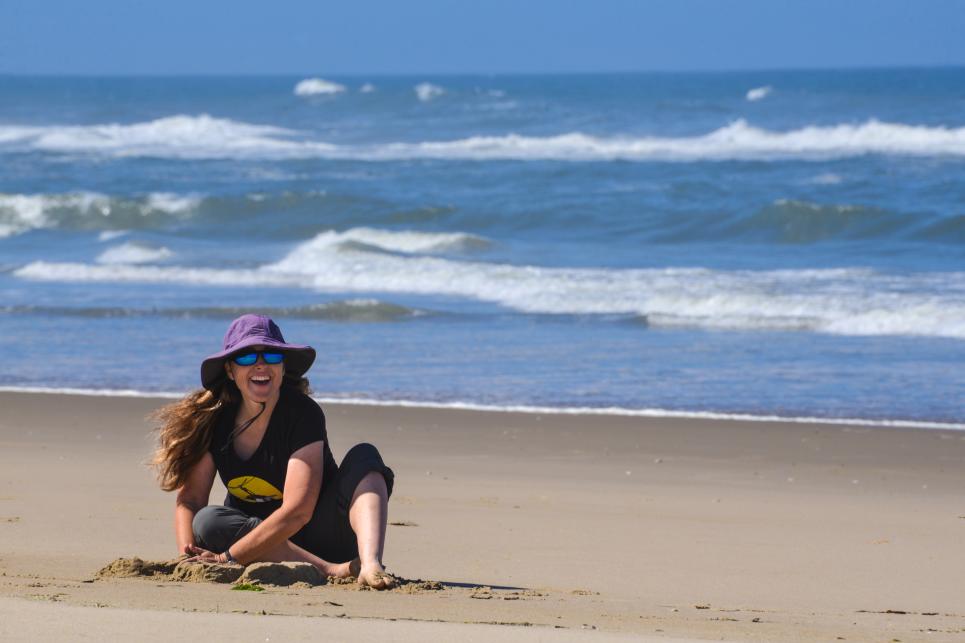
Beach Clean Up
The popular past-time of leisurely walking along the sandy Oregon shore in search of sea glass, agates, driftwood, baubles and other bounty churned up by the sea now includes potential somber discoveries as items washed away in Japan's 2011 tsunami drift ashore all along the Pacific Coast from Mexico to Alaska. Beachcombers are urged to use caution and show respect when encountering marine debris.
Assisting with beach clean-up is always appreciated. Litter such as plastic bottles, buoys, Styrofoam, plastic bags, cans or other garbage can be collected and recycled or appropriately discarded. Documenting large beach deposits with photos, noting the date and location, and forwarding to beach.debris@state.or.us is also helpful. If you encounter large debris or potentially hazardous materials like gas cans or oil drums, call the National Response Center at 800.424.8802. Do not touch them or attempt to remove them yourself.

Metal Detecting
Serious beachcombers enjoy metal detecting for a deeper dive into treasure collecting. Some areas along the beach require permits and some areas do not. Near Florence, the developed areas of Honeyman, North Jetty and Elk Creek Tunnel allow non-permitted metal detecting.
Oregon State Parks has more information about metal detecting practices and places to go. Please note that when detecting, only small digging tools may be used - like ice picks, screwdrivers or small knives. Shovels are prohibited. All areas must be returned to the original condition after digging and finds with a value greater than $100 must be turned in to the park service.

As always, beachcombing is a peaceful and meditative experience punctuated by many delightful discoveries of nature's little treasures. Tread lightly, enjoy the experience, and please leave the beach just like you found it, or even better! We are working hard to save the dunes and you can help.
How to Explore Oregon's Tide Pools
Coastal marine life provides fascinating sightseeing and photography opportunities! Here is how to explore…
